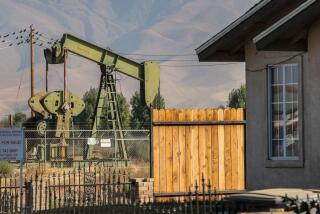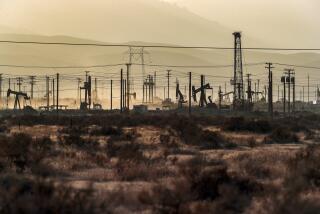The Keystone XL oil pipeline: Some questions and answers
This year President Obama will decide whether to allow construction of the Keystone XL pipeline from Alberta, Canada, to the Gulf of Mexico. Few environmental issues in recent years have engendered so much passion and debate. The pipeline would facilitate the transportation of a particularly thick type of oil, oil sands crude, from Canada to U.S. ports.
What is oil sands crude?
It is a tar-like substance containing bitumen, extracted from the boreal forests of western Canada by strip mining.
Where would the pipeline go?
If approved, Keystone XL would carry 830,000 barrels a day from Alberta to refineries along the Texas Gulf Coast. Canada is already the biggest exporter of oil to the United States.
Why is this issue so important to the Canadian government?
Only 4% of Canada’s 170 billion barrels in proven reserves of oil sands crude has been developed, and Canada sees the deposits as a massive source of wealth. The United States buys 98.5% of Canadian oil exports at a great discount compared with global prices. Canada wants the pipeline built so it can sell to the world market.
Why are environmentalists concerned about it?
Environmentalists contend that expanded oil sands production would make it harder to rein in emissions of greenhouse gases that drive climate change.
While a recent study showed that development of all the Canadian oil sands would add an almost undetectable amount to global temperatures, its authors and other scientists pointed out that oil sands consumption would increase the carbon output from the U.S. and Canada considerably and signal to the rest of the world an unwillingness by the two countries to tackle climate change in a serious way.
Is the extraction of the oil from the sand harmful to the local environment?
To get to the deposits, forests and the underlying soil and peat must be stripped. In addition, a recent study has found an increase in carcinogens in six lakes in the mining region since oil sands development began in 1978. Finally, spills of diluted bitumen shipped from Canada have proven difficult to clean up. Diluted bitumen that entered Michigan’s Kalamazoo River in 2010 from a burst Enbridge pipeline is still being cleaned up and has cost $1 billion so far. On March 29, an Exxon pipeline ruptured, dumping 3,500 to 5,000 barrels of diluted bitumen into an Arkansas suburb.
What do supporters of the pipeline say?
They predict that the venture would create thousands of jobs. The State Department study estimated that during construction, the pipeline would produce an average of 3,900 jobs a year along the route. The pipeline’s supporters also say that the Canadian crude would replace some heavy oil imported from Venezuela. More oil from Canada would shield the U.S. from possible embargoes or disruptions from less stable parts of the world.
Are there other ways to bring the oil to the U.S., besides Keystone XL?
Some oil is already being transported by rail. Enbridge, a competitor to Keystone owner TransCanada, is poised to bring in as much oil sands crude to the U.S. as Keystone XL by upgrading its existing Canada-to-U.S. pipeline network.
Does the new pipeline route avoid the Ogallala aquifer, the main freshwater source for much of the northern Plains states?
No, though it was rerouted in an attempt to avoid the most environmentally sensitive part of the aquifer in Nebraska. The State Department study concluded that any spill into the aquifer from the pipeline would not lead to extensive contamination.
Would construction of the pipeline lead to lower prices for gasoline in the U.S.?
Highly unlikely. The biggest factor in gasoline prices is the global price of oil.
When will Obama decide?
Not for several more months.
More to Read
Sign up for Essential California
The most important California stories and recommendations in your inbox every morning.
You may occasionally receive promotional content from the Los Angeles Times.











